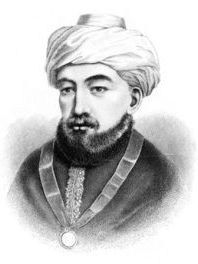Source: Guide for the Perplexed (c. 1190), Part III, Ch.17
Moïse Maïmonide: Citations en anglais
Source: Guide for the Perplexed (c. 1190), Part III, Ch.17
Source: Hilkhot De'ot (Laws Concerning Character Traits), Chapter 5, Section 13
Source: Guide for the Perplexed (c. 1190), Part III, Ch.8
Source: Guide for the Perplexed (c. 1190), Part III, Ch.8
Source: Guide for the Perplexed (c. 1190), Part III, Ch.25
Source: Guide for the Perplexed (c. 1190), Part III, Ch.15
Source: Guide for the Perplexed (c. 1190), Part III, Ch.17
Source: Guide for the Perplexed (c. 1190), Part III, Ch.7
Source: Guide for the Perplexed (c. 1190), Part I, pp.294-295 (1881) Tr. Friedlander
Treatise 4: “Idolatry,” H. Russell, trans. (1983), p. 73
Mishneh Torah (c. 1180)
“It is man's duty to love and to fear God, even without hope of reward or fear of punishment.”
Source: Guide for the Perplexed (c. 1190), Part III, Ch.24
Introduction
Guide for the Perplexed (c. 1190), Part III
Source: Guide for the Perplexed (c. 1190), Part I, p. 296 (1881) Tr. Friedlander
Source: Guide for the Perplexed (c. 1190), Part III, Ch.23
“Silence is a fence around wisdom.”
Source: Hilkhot De'ot (Laws Concerning Character Traits), Chapter 2, Section 5, p. 33
Source: Guide for the Perplexed (c. 1190), Part III, Ch.32
As quoted in A Maimonides Reader (1972) by Isadore Twersky, p. 135. A footnote on this page states : tzedekah is translated as both "righteousness" and "charity".
Source: Guide for the Perplexed (c. 1190), Part III, Ch.33
Source: Guide for the Perplexed (c. 1190), Part III, Ch.28
Source: Guide for the Perplexed (c. 1190), Part III, Ch.7
Source: Guide for the Perplexed (c. 1190), Part III, Ch.17
Source: Guide for the Perplexed (c. 1190), Part III, Ch.10
Source: Guide for the Perplexed (c. 1190), Part III, Ch.12
Gen. xviii. 19
Source: Guide for the Perplexed (c. 1190), Part III, Ch.24
Source: Guide for the Perplexed (c. 1190), Part III, Ch.12
Source: Guide for the Perplexed (c. 1190), Part III, Ch.12
